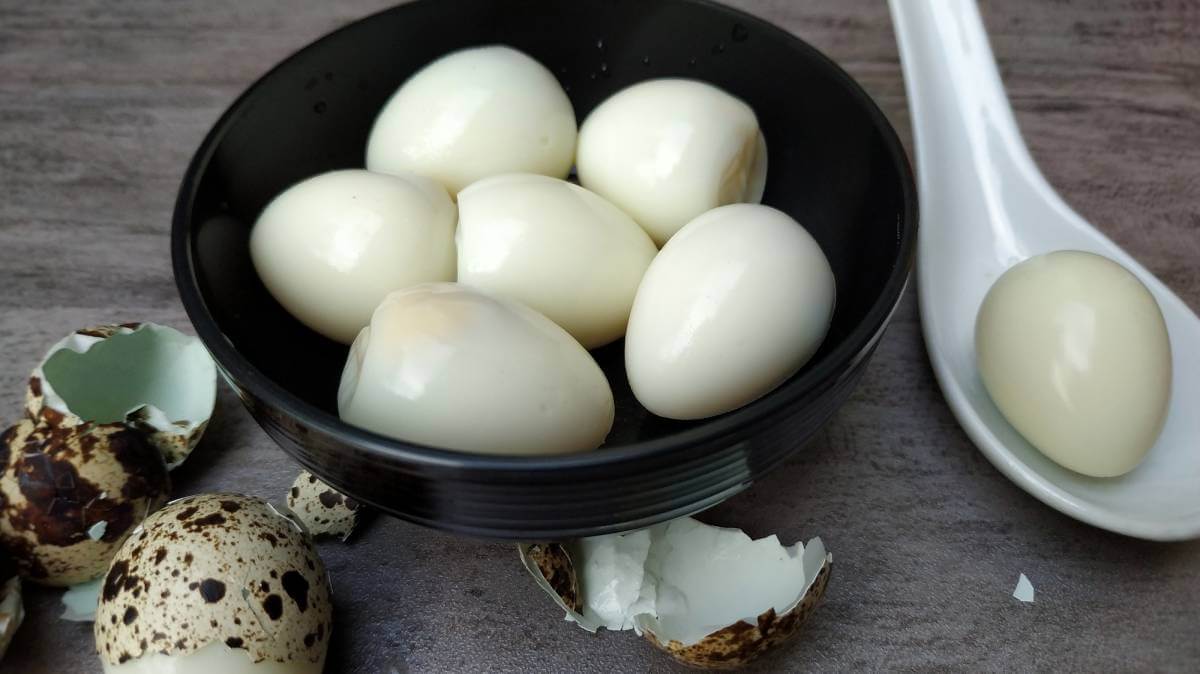Boiled eggs are a snack in themselves as well as the star player in dishes such as Caesar salad, niçoise salad, Scotch eggs and even that ’70s favourite – devilled eggs.
What makes a perfect boiled egg has sparked countless arguments and almost as many theories. But it’s not just about what’s inside. How to get an egg out of the shell also has more than a few ‘I swear by this method’ tips going around.
Boiled eggs are delicious but removing half the egg with the shell is an exercise in kitchen rage.
Here are a few of the more popular tips and methods to ensuring the shell and boiled egg stay well away from each other.
Popular plans right now
Fresh is not best
The best start to your easy peasy, egg-peeling life is beginning with eggs that aren’t super fresh.
You are probably safe with supermarket eggs, but if you have your own hens or are buying them from a farmers’ market, it’s best to leave them for a week or so.
Shells like to stick to freshly laid eggs but the shells’ porous nature absorbs more air over time, putting a bit of space between the egg and the shell.
Baked idea
Another top tip is to add about a half or quarter teaspoon of baking soda or powder to the water.
The alkaline nature of the soda acts on the proteins and helps loosen the shell from the eggs.
Using this method may result in your eggs smelling more eggy, but that’s the risk you take.
The complete opposite
The internet throws up some curly ones, and this one might be my latest favourite.
You can put baking soda in your water (alkaline) or you can put vinegar (acidic), which are of course complete opposites.
The theory is the vinegar dissolves the calcium carbonate in the shell.
I don’t know which works better. Maybe you could try both methods and see which works for you.
Hot spot
Eggs are traditionally put in cold water and brought gently to the boil to avoid cracking and that unsightly look of blobby egg escaping the shell.
Apparently cooking them from cold causes proteins to stick to the shell, making them hard to peel.
If you want easy-to-peel eggs you are going to have to go against the habits of a lifetime and place them in hot water instead.
It’s generally recommended to place them in water that is gently boiling or steam them.
You should gently place them in the pan using a spoon, and don’t overcrowd the saucepan as overcrowded eggs may bump into each other and crack.
Cold comfort
Once you have boiled the eggs to your liking (I am not entering that argument), you should place them in ice water or a very cold water bath.
Once again, the advice is divided, and anywhere between 3–15 minutes is recommended. Once again you should probably experiment to see what works best for you.
Another tip is to gently crack the eggs before you put them into cold water. This will allow the water to seep into the spaces between the shell and the egg. Rolling them around the pan hard enough so they knock into each other is probably easier than cracking them individually.
Water, water everywhere
When you finally go to peel your eggs, it can also help to peel them under running water, which will once again put water between the shell and egg.
Do you have a high egg-to-shell ratio left over when you peel your eggs? Have you tried any of the these suggested methods? Why not share tips of your own in the comments section below?
Also read: So many eggs, which ones should you choose?


Well I don’t know if the other methods work or not but I have tried the ice water and baking soda (powder) ones and know they don’t work, have also tried leaving them under running cold water until the egg is cold and that didn’t work either.
A method I always use is placing the hard boiled egg in a nedium sized glass, put you hand over the top firmly, and shake the glass/egg vigorously in all directions. after about 15 seconds, your egg will have a broken shell in many pieces, and you can take it out of the glass and easily peel the shell which is almost falling off without a problem. Doesn’t matter whether egg is cold or hot
Easiest way to steam them. Get a double steamer, put water in the saucepan part put on the lid and bring to rolling boil – put eggs in the top part, put over the bottom part, put on the lid and steam for 12 minutes for hard boiled. Then put the boiled eggs in a bowl of ice cold water for 10-15 minutes. To peel, crack each end of the egg on a hard surface then roll the egg back and foreword to crack the shell – most times the shell will just slip off.